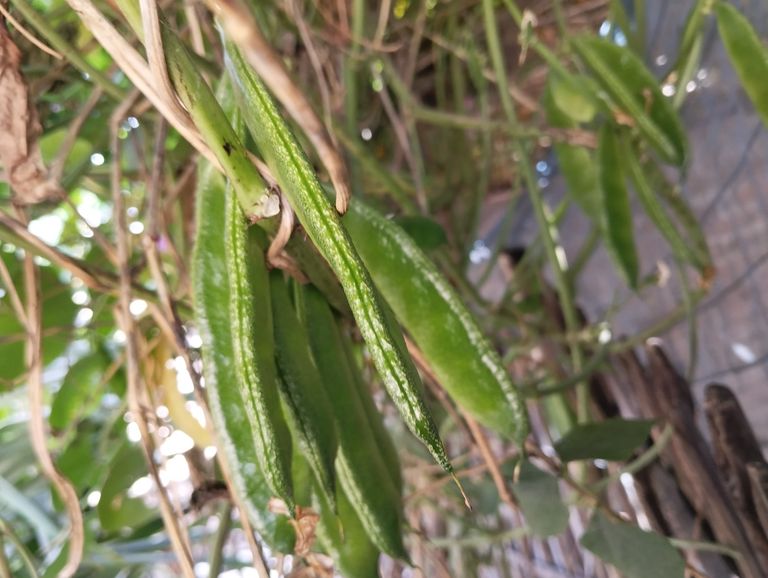
Complete Guide to SIM Cultivation A Step-by-Step Process.
SIM (System of Intensive Management) cultivation is an advanced agricultural method that optimizes resources, improves yield, and ensures sustainable farming practices. This technique is widely used to maximize productivity in various crops. In this blog, we will cover everything you need to know about SIM cultivation, from preparation to harvesting, along with tips for success.
- Understanding SIM Cultivation
SIM cultivation is a modern farming method that involves scientific approaches such as precise planting techniques, efficient irrigation, proper fertilization, and pest control. The goal is to achieve higher yields while maintaining soil health and minimizing resource wastage.
- Selecting the Right Land and Soil Preparation
A. Choosing the Land
The land should have proper drainage and sufficient sunlight exposure.
Soil fertility should be tested to determine nutrient availability.
Avoid waterlogged or rocky areas.
B. Soil Preparation
Plowing and Tilling: Loosen the soil to allow root penetration and aeration.
Adding Organic Matter: Compost or farmyard manure improves soil fertility.
Soil pH Adjustment: Apply lime if the soil is too acidic or sulfur if it's too alkaline.
Mulching: Use straw or biodegradable mulch to retain moisture and prevent weeds.
- Seed Selection and Planting
A. Choosing High-Quality Seeds
Use hybrid or improved varieties resistant to pests and diseases.
Ensure seeds have high germination rates.
Buy from certified suppliers.
B. Planting Techniques
Spacing: Maintain proper distance between plants to avoid overcrowding.
Depth: Plant seeds at the recommended depth to promote strong root growth.
Watering After Planting: Ensure adequate moisture for germination.
- Irrigation Management
Water is crucial for plant growth, but excessive watering can lead to root rot. Here are some effective irrigation techniques:
Drip Irrigation: Saves water and directs moisture to the plant roots.
Sprinkler Systems: Suitable for large fields, ensuring even water distribution.
Mulching: Helps retain soil moisture and reduces evaporation.
Rainwater Harvesting: A sustainable practice to store and use rainwater.
- Fertilization and Nutrient Management
Proper fertilization ensures strong plant growth and high yields.
A. Organic Fertilizers
Compost, manure, and green fertilizers enhance soil fertility naturally.
B. Chemical Fertilizers
Apply NPK (Nitrogen, Phosphorus, and Potassium) fertilizers as per soil test results.
Use slow-release fertilizers to avoid nutrient leaching.
C. Foliar Feeding
Spraying liquid fertilizers directly on leaves provides quick nutrient absorption.
- Weed and Pest Control
A. Weed Management
Manual Weeding: Hand removal of weeds to prevent competition for nutrients.
Mulching: Suppresses weed growth and maintains soil moisture.
Herbicides: Use eco-friendly herbicides for large-scale farming.
B. Pest Control
Natural Predators: Encourage beneficial insects like ladybugs and spiders.
Organic Pesticides: Neem oil and garlic sprays are effective against pests.
Crop Rotation: Changing crops each season prevents pest buildup.
- Disease Prevention and Management
Plant diseases can destroy crops if not managed properly. Follow these steps for prevention:
Use disease-resistant varieties.
Ensure proper spacing to improve air circulation.
Avoid excessive watering to prevent fungal infections.
Use biofungicides and natural remedies to control diseases.
- Growth Monitoring and Maintenance
Regularly check plants for signs of stress, nutrient deficiencies, and pest attacks. Maintain a farming journal to track growth patterns, weather conditions, and soil health.
- Harvesting and Post-Harvest Management
A. Harvesting Techniques
Harvest crops at the right maturity stage to ensure quality.
Use proper tools to avoid damaging plants.
Handle produce carefully to reduce post-harvest losses.
B. Storage and Transportation
Dry harvested produce properly before storage.
Use ventilated storage facilities to prevent spoilage.
Transport crops in proper packaging to avoid physical damage.
- Sustainable Practices in SIM Cultivation
To ensure long-term productivity, adopt sustainable farming methods:
Crop Rotation: Improves soil health and prevents pest infestation.
Cover Crops: Protects soil from erosion and adds organic matter.
Agroforestry: Planting trees alongside crops for better biodiversity.
Water Conservation: Implement rainwater harvesting and efficient irrigation systems.
Conclusion
SIM cultivation is an efficient farming method that enhances productivity while promoting environmental sustainability. By following proper land preparation, irrigation management, fertilization, and pest control strategies, farmers can achieve high yields with minimal resource wastage. Implementing modern techniques and sustainable practices will ensure long-term agricultural success.If you found this guide helpful, share it with fellow farmers and agricultural enthusiasts! Happy farming.
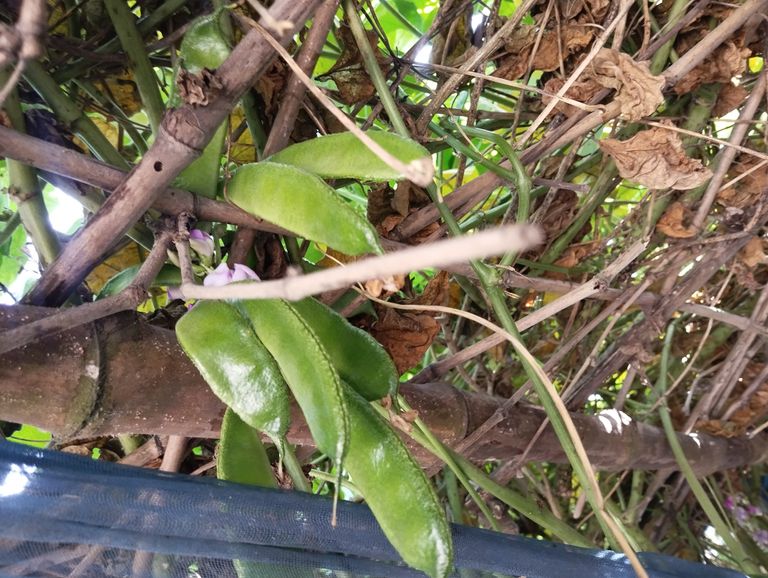
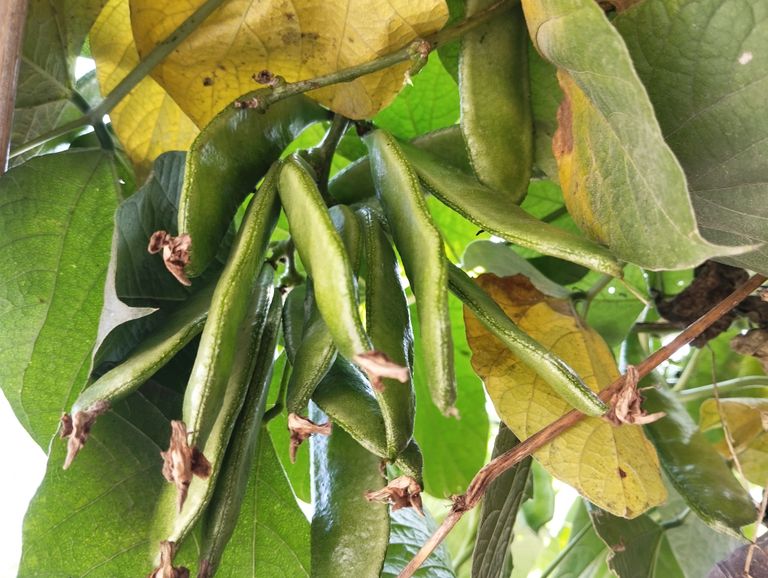
Simple and Delicious Sim Bhaji Recipe
Sim Bhaji (Broad Bean Stir-Fry) is a quick and nutritious dish made with green broad beans (sim) and basic spices. This Bengali-style recipe is perfect as a side dish with rice or roti. Let’s dive into the recipe!
Ingredients:
250g broad beans (sim), chopped
1 medium potato, diced (optional)
1 small onion, finely chopped
2 cloves garlic, minced
1 green chili, chopped
½ teaspoon turmeric powder
½ teaspoon red chili powder
½ teaspoon cumin seeds
½ teaspoon mustard seeds
½ teaspoon garam masala (optional)
Salt to taste
2 tablespoons mustard oil or any cooking oil
Fresh coriander leaves for garnish (optional)
Instructions:
Step 1: Preparing the Ingredients
Wash the broad beans thoroughly and chop them into small pieces.
Peel and dice the potato if using.
Finely chop the onion, green chili, and garlic.
Step 2: Cooking the Bhaji
- Heat Oil
Heat mustard oil in a pan until it starts to smoke lightly. Reduce the heat to medium.
Add cumin seeds and mustard seeds. Let them splutter.
- Sauté the Aromatics
Add chopped onions and green chilies. Sauté until the onions turn golden brown.
Add minced garlic and stir for a few seconds until fragrant.
- Add Spices and Vegetables
Add turmeric powder, red chili powder, and salt. Stir well.
Add the chopped broad beans and diced potato. Mix everything properly.
- Cook Until Tender
Cover the pan and cook on low-medium heat for 10-12 minutes, stirring occasionally.
If needed, sprinkle a little water to prevent burning.
- Final Touch
Once the beans and potatoes are tender, sprinkle garam masala and mix well.
Cook for another 2 minutes, then turn off the heat.
- Garnish & Serve
Garnish with freshly chopped coriander leaves.
Serve hot with steamed rice or chapati.
Tips for the Best Sim Bhaji
For extra flavor, add a pinch of sugar to balance the bitterness of mustard oil.
Make it spicier by adding more green chilies or extra red chili powder.
For a richer taste, you can add a spoonful of ghee at the end.
To enhance the texture, try adding a few crushed peanuts or sesame seeds.
Nutritional Benefits
Broad beans (sim) are packed with fiber, vitamins, and antioxidants. They help in digestion, boost immunity, and are great for heart health. This dish is not only tasty but also healthy!
Final Thoughts
Sim Bhaji is a simple yet flavorful dish that can be made in just 20 minutes. It’s perfect for a quick lunch or dinner and pairs beautifully with rice or roti. Give this recipe a try and enjoy the authentic Bengali flavors at home! Let me know in the comments how your Sim Bhaji turned out! Happy cooking.
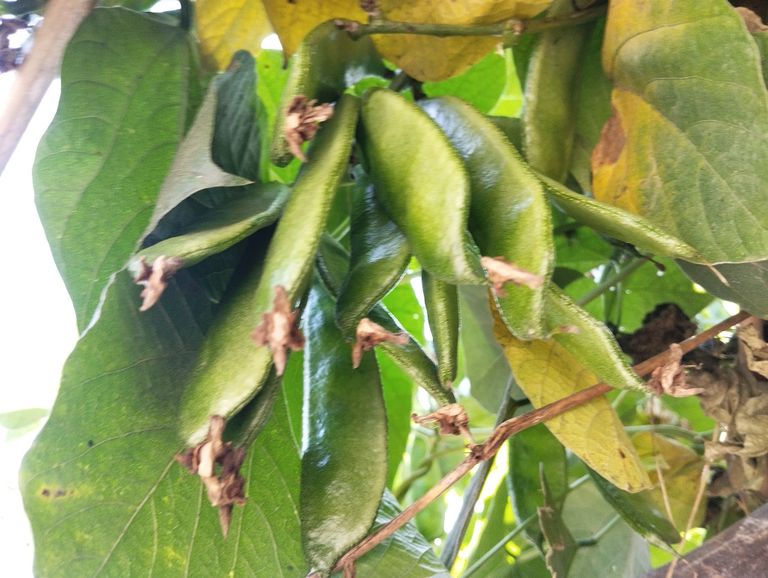
Common Diseases of Bean Flowers and Their Management
Bean plants (commonly referred to as "sim" in Bengali) are widely cultivated for their nutritious pods. However, their flowers and plants are susceptible to various diseases that can reduce yield and quality. Understanding these diseases, their symptoms, causes, and management strategies can help farmers and gardeners protect their crops.
- Powdery Mildew (Erysiphe polygoni)
Symptoms:
White or gray powdery patches appear on flowers, leaves, and stems.
Affected flowers may wither and fail to produce pods.
Severe infections can cause premature leaf drop and reduced yield.
Causes:
Fungal spores spread through wind and moisture.
High humidity and warm temperatures promote growth.
Poor air circulation increases disease risk.
Management:
Use resistant bean varieties.
Apply sulfur-based or fungicidal sprays (e.g., neem oil, copper-based fungicides).
Ensure proper spacing between plants to improve air circulation.
- Anthracnose (Colletotrichum lindemuthianum)
Symptoms:
Brown or black lesions on flowers, stems, and pods.
The flowers may turn black and fall off before fruit formation.
Pod deformation and reduced seed quality.
Causes:
Fungal spores spread through infected seeds and rain splashes.
High humidity and wet conditions encourage infection.
Management:
Use disease-free seeds and resistant varieties.
Remove infected plant debris to prevent fungal spread.
Apply fungicides like mancozeb or chlorothalonil if necessary.
- Rust (Uromyces appendiculatus)
Symptoms:
Small yellow or orange spots on flowers, leaves, and stems.
Leaves turn brown and fall off prematurely.
Flowers may become deformed and fail to produce pods.
Causes:
Fungal spores spread via wind and rain.
Warm, humid conditions favor disease development.
Management:
Use resistant bean varieties.
Avoid overhead watering to reduce moisture on leaves and flowers.
Apply fungicides like sulfur or copper-based sprays.
- Bacterial Blight (Xanthomonas campestris pv. phaseoli)
Symptoms:
Water-soaked spots on flowers, turning brown or black.
Wilting and premature dropping of flowers.
Brown streaks on stems and leaves.
Causes:
Bacteria spread through contaminated seeds and tools.
High humidity and rainfall encourage infection.
Management:
Use certified disease-free seeds.
Remove and destroy infected plants.
Avoid overhead irrigation and improve air circulation.
- Botrytis Blight (Botrytis cinerea)
Symptoms:
Gray mold appears on flowers, stems, and pods.
Flowers become mushy and drop off.
Pods develop brown, sunken lesions.
Causes:
Fungal spores spread through wind and moisture.
High humidity and overcrowded planting increase risk.
Management:
Remove infected flowers and plant debris.
Improve air circulation and reduce humidity.
Apply fungicides like iprodione or thiophanate-methyl.
- Downy Mildew (Pseudoperonospora cubensis)
Symptoms:
Yellow or light green patches on leaves, which turn brown over time.
Affected flowers become discolored and drop prematurely.
A white, fluffy fungal growth appears on the undersides of leaves.
Causes:
Fungal spores spread through wind and water.
Cool, moist conditions promote infection.
Management:
Use resistant varieties and plant in well-drained soil.
Avoid excessive watering and ensure good air circulation.
Apply fungicides such as copper oxychloride.
- Bean Flower Abortion Due to Viral Diseases
Common Viral Diseases:
Bean Common Mosaic Virus (BCMV)
Bean Yellow Mosaic Virus (BYMV)
Symptoms:
Stunted plant growth and curled leaves.
Yellowing and mosaic patterns on leaves.
Flowers fail to develop properly and drop off.
Causes:
Spread by aphids and infected seeds.
High temperatures and stress increase susceptibility.
Management:
Use virus-resistant varieties.
Control aphid populations with neem oil or insecticides.
Remove and destroy infected plants immediately.
General Preventive Measures for Bean Flower Diseases
- Plant Disease-Resistant Varieties – Choose bean cultivars that are resistant to common fungal, bacterial, and viral infections.
- Practice Crop Rotation – Avoid planting beans in the same soil every season to prevent pathogen buildup.
- Ensure Proper Spacing – Adequate spacing between plants improves air circulation and reduces humidity.
- Maintain Good Hygiene – Remove infected plant parts, weeds, and debris regularly.
- Control Pests – Aphids, thrips, and whiteflies spread viruses and bacteria; use organic or chemical pest control methods.
- Apply Fungicides and Bactericides – Use appropriate chemical treatments when necessary, but always follow safety guidelines.
Bean flowers are vulnerable to various fungal, bacterial, and viral diseases, which can significantly impact yield and quality. By recognizing early symptoms, implementing preventive measures, and using disease-resistant varieties, farmers and gardeners can effectively manage these threats and ensure a healthy bean harvest. Proper care, hygiene, and timely interventions will help maintain strong and productive bean plants throughout the growing season.
Would you like additional details on organic treatment options or a customized disease management plan? Let me know.
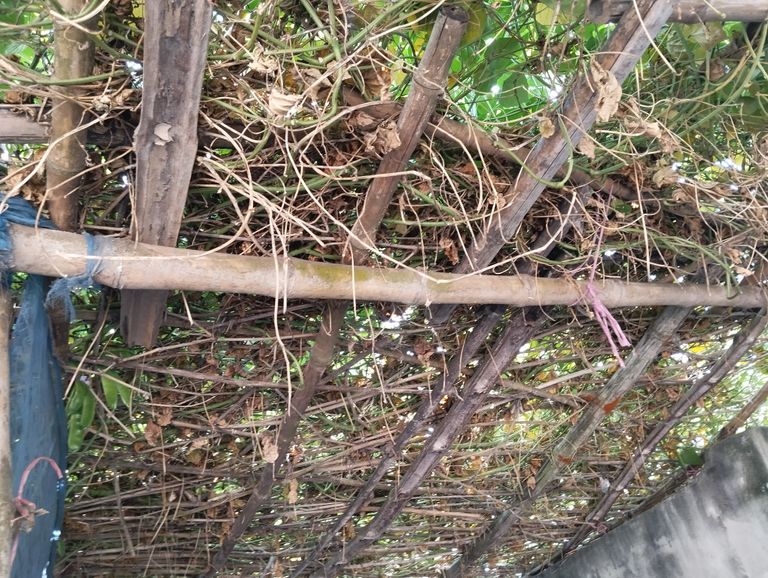
Common Diseases of Bean Flowers and Their Management
Bean plants (commonly referred to as "sim" in Bengali) are widely cultivated for their nutritious pods. However, their flowers and plants are susceptible to various diseases that can reduce yield and quality. Understanding these diseases, their symptoms, causes, and management strategies can help farmers and gardeners protect their crops.
- Powdery Mildew (Erysiphe polygoni)
Symptoms:
White or gray powdery patches appear on flowers, leaves, and stems.
Affected flowers may wither and fail to produce pods.
Severe infections can cause premature leaf drop and reduced yield.
Causes:
Fungal spores spread through wind and moisture.
High humidity and warm temperatures promote growth.
Poor air circulation increases disease risk.
Management:
Use resistant bean varieties.
Apply sulfur-based or fungicidal sprays (e.g., neem oil, copper-based fungicides).
Ensure proper spacing between plants to improve air circulation.
- Anthracnose (Colletotrichum lindemuthianum)
Symptoms:
Brown or black lesions on flowers, stems, and pods.
The flowers may turn black and fall off before fruit formation.
Pod deformation and reduced seed quality.
Causes:
Fungal spores spread through infected seeds and rain splashes.
High humidity and wet conditions encourage infection.
Management:
Use disease-free seeds and resistant varieties.
Remove infected plant debris to prevent fungal spread.
Apply fungicides like mancozeb or chlorothalonil if necessary.
- Rust (Uromyces appendiculatus)
Symptoms:
Small yellow or orange spots on flowers, leaves, and stems.
Leaves turn brown and fall off prematurely.
Flowers may become deformed and fail to produce pods.
Causes:
Fungal spores spread via wind and rain.
Warm, humid conditions favor disease development.
Management:
Use resistant bean varieties.
Avoid overhead watering to reduce moisture on leaves and flowers.
Apply fungicides like sulfur or copper-based sprays.
- Bacterial Blight (Xanthomonas campestris pv. phaseoli)
Symptoms:
Water-soaked spots on flowers, turning brown or black.
Wilting and premature dropping of flowers.
Brown streaks on stems and leaves.
Causes:
Bacteria spread through contaminated seeds and tools.
High humidity and rainfall encourage infection.
Management:
Use certified disease-free seeds.
Remove and destroy infected plants.
Avoid overhead irrigation and improve air circulation.
- Botrytis Blight (Botrytis cinerea)
Symptoms:
Gray mold appears on flowers, stems, and pods.
Flowers become mushy and drop off.
Pods develop brown, sunken lesions.
Causes:
Fungal spores spread through wind and moisture.
High humidity and overcrowded planting increase risk.
Management:
Remove infected flowers and plant debris.
Improve air circulation and reduce humidity.
Apply fungicides like iprodione or thiophanate-methyl.
- Downy Mildew (Pseudoperonospora cubensis)
Symptoms:
Yellow or light green patches on leaves, which turn brown over time.
Affected flowers become discolored and drop prematurely.
A white, fluffy fungal growth appears on the undersides of leaves.
Causes:
Fungal spores spread through wind and water.
Cool, moist conditions promote infection.
Management:
Use resistant varieties and plant in well-drained soil.
Avoid excessive watering and ensure good air circulation.
Apply fungicides such as copper oxychloride.
- Bean Flower Abortion Due to Viral Diseases
Common Viral Diseases:
Bean Common Mosaic Virus (BCMV)
Bean Yellow Mosaic Virus (BYMV)
Symptoms:
Stunted plant growth and curled leaves.
Yellowing and mosaic patterns on leaves.
Flowers fail to develop properly and drop off.
Causes:
Spread by aphids and infected seeds.
High temperatures and stress increase susceptibility.
Management:
Use virus-resistant varieties.
Control aphid populations with neem oil or insecticides.
Remove and destroy infected plants immediately.
General Preventive Measures for Bean Flower Diseases
- Plant Disease-Resistant Varieties – Choose bean cultivars that are resistant to common fungal, bacterial, and viral infections.
- Practice Crop Rotation – Avoid planting beans in the same soil every season to prevent pathogen buildup.
- Ensure Proper Spacing – Adequate spacing between plants improves air circulation and reduces humidity.